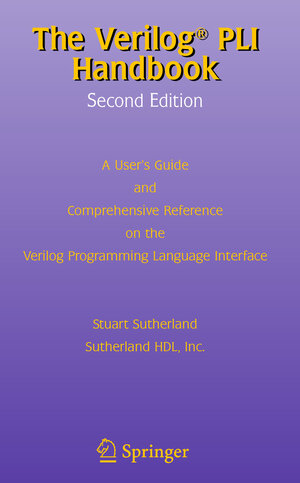
×
![Buchcover ISBN 9781475783711]()
„The Verilog PLI Handbook is the best book written about the PLI. Use it once, and it will pay for itself by saving you a great deal of time. The book brings clarity to the Verilog Programming Language Interface. The descriptions and extensive examples shed new light on the many dark corners of the PLI. Stuart Sutherland has produced the definitive guide, covering all versions and uses for the PLI. I recommend this book to all Verilog users who want to learn about the PLI.“
(Chris Spear, Verification Consultant, Synopsys, Inc.)
The Verilog PLI Handbook
A User’s Guide and Comprehensive Reference on the Verilog Programming Language Interface
von Stuart Sutherlandby Maq Mannan President and CEO, DSM Technologies Chairman of the IEEE 1364 Verilog Standards Group Past Chairman of Open Verilog International One of the major strengths of the Verilog language is the Programming Language Interface (PLI), which allows users and Verilog application developers to infinitely extend the capabilities of the Verilog language and the Verilog simulator. In fact, the overwhelming success of the Verilog language can be partly attributed to the exi- ence of its PLI. Using the PLI, add-on products, such as graphical waveform displays or pre and post simulation analysis tools, can be easily developed. These products can then be used with any Verilog simulator that supports the Verilog PLI. This ability to create thi- party add-on products for Verilog simulators has created new markets and provided the Verilog user base with multiple sources of software tools. Hardware design engineers can, and should, use the Verilog PLI to customize their Verilog simulation environment. A Company that designs graphics chips, for ex- ple, may wish to see the simulation results of a new design in some custom graphical display. The Verilog PLI makes it possible, and even trivial, to integrate custom so- ware, such as a graphical display program, into a Verilog simulator. The simulation results can then dynamically be displayed in the custom format during simulation. And, if the company uses Verilog simulators from multiple simulator vendors, this integrated graphical display will work with all the simulators.




